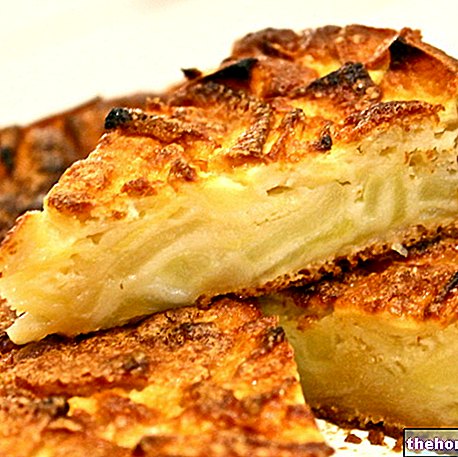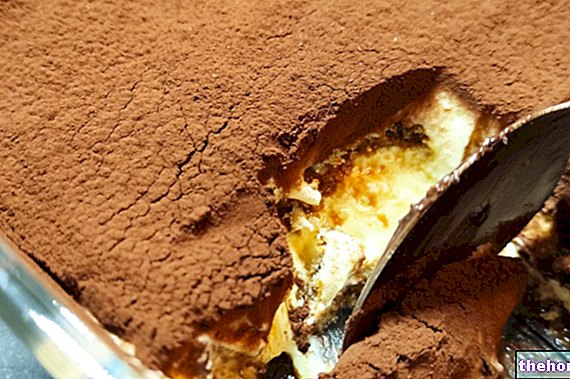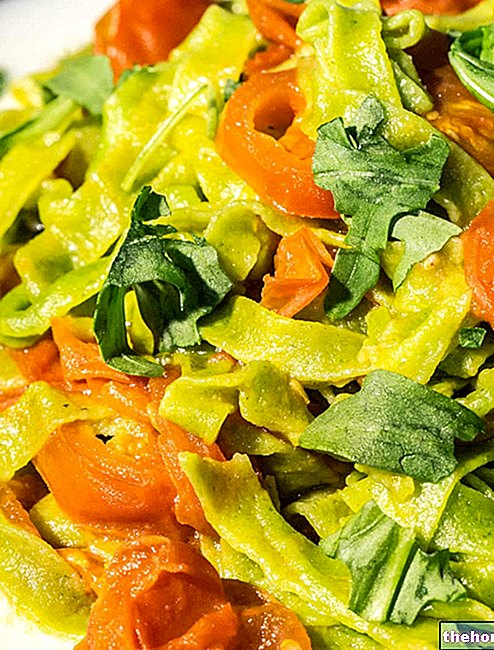Today I thought of all the people who, despite being vegetarians, cannot give up the pleasure of cheese. For those who still don't know, most cheeses include the addition of animal rennet, an enzymatic mix extracted from the stomach of calves and lambs. Milk, however, can also be coagulated in other ways:
- acidifying with vinegar or lemon juice
- coagulating with vegetable, microbial rennet.
Video of the Recipe
Problems with playing the video? Reload the video from youtube.
Identity Card of the Recipe
-
Ingrediants
For about 450 g of cheese
- 2 L of pasteurized whole milk
- 50 g of yogurt
- Vegetable food: 20 drops of liquid rennet
- Q.b. of salt
Materials Needed
- Very large casserole
- Food thermometer
- Fuscelle with a diameter of 15 cm
- Wooden ladles
- Shot glasses
- Skimmer
- Bowls to collect the serum
- Clean tea towel
Preparation
- Pour the pasteurized milk into the saucepan and bring to a temperature of 35 ° C. Then add the natural yogurt and the liquid microbial rennet.
Why add yogurt?
By law, cheeses must be prepared with pasteurized milk, or with milk that has undergone pasteurization: this is a heat treatment that guarantees the suitability of the milk for feeding, killing any potentially pathogenic bacteria. At the same time, however, pasteurization kills some lactic ferments essential for the production of cheese: these enzymes must therefore be reintegrated into the milk when the cheese is made. For grafting, it is possible to use specific selected enzymes (available from dairies or pharmacies) or natural yogurt.- Add the liquid microbial rennet, continuing to mix for 30 seconds. Leave to rest for an hour, covering with the lid.
What is vegetable rennet?
There are various types of vegetable rennet, used for the production of cheeses suitable for lacto-ovo-vegatarian subjects. Vegetable rennet consists of juices from parts of some vegetables, in particular thistle and artichoke. However, there are other types of rennet of microbial origin: food biotechnologies have managed to select some microorganisms (eg Mucor Meihei) with useful characteristics for production processes, isolating the gene of animal origin responsible for the production of chymosin (an animal enzyme that, together with pepsin it is used to coagulate milk).- During the storage phase, the milk (or rather, its proteins) has the necessary time to coagulate: after an hour, in fact, the milk will have taken on a gelatinous consistency, very similar to that of a pudding. The curd is a three-dimensional network in which fat globules and buttermilk (droplets of whey) with sugars (lactose) and mineral salts are trapped.
- At this point, we proceed with the breaking of the curd, or with the separation of the curd from the whey, cutting the mass into squares of 5 cm per side. Leave to rest for 15 minutes. Repeat the operation, but using a whisk. Let the curd rest again for 15 minutes: in this way, the precipitation of the solid part is facilitated.
- Transfer the curd into special molds (wicker, plastic or a disposable material). Allow the curd to drip, placing the container in containers so that the fuscella is raised. It is advisable to move the fuscella often with rotating movements to facilitate the release of the serum.
- To speed up the so-called “purge” (removal of the serum) it is possible to place a disc or a weight directly in the mold.
- When the solid mass has completely "dried" from the whey, the cheese is salted, which can be done dry or in brine. Rub two pinches of fine salt on the cheese, trying to distribute it evenly.
What does the brine consist of?
For the brine, proceed as follows: dissolve 80 g of salt in 1 liter of water and allow to cool completely: the liquid must reach 15 ° C. When the liquid is ready, immerse the cheese completely (still inside the mold) for 15 minutes.- After that, the cheese can be consumed immediately. Alternatively, it is possible to mature the cheese, leaving it uncovered on a grill in the air for 10-25 days.
Alice's comment - PersonalCooker
A delicious cheese, whose flavor is almost the same as the classic primosale cheese. The pairing with fresh salad and cherry tomatoes is special for a light and tasty meal.Nutritional values and Health Comment on the recipe
ATTENTION! Due to the impossibility of indirectly estimating the chemical values of the food with sufficient accuracy, the table on the side does not show the details of the nutritional translation.
Cheese with Vegetable / Microbial Rennet is a food very similar to fresh cheese produced with rennet of animal origin. Calories come mainly from lipids, followed by proteins and finally carbohydrates. The triglycerides are mainly composed of saturated fatty acids, the peptides are essentially of high biological value and the few carbohydrates are of the simple type (lactose). Cholesterol should be present in an average quantity and fibers absent.
Cheese with Vegetable / Microbial Rennet is a food to be consumed in moderation in case of hypercholesterolemia and obesity (even if it is much less contraindicated than most commercial dairy products); moreover, it does not lend itself to the diet against lactose intolerance.
The average portion should be around 100-150g.

.jpg)


























